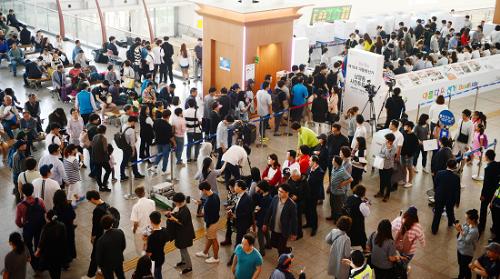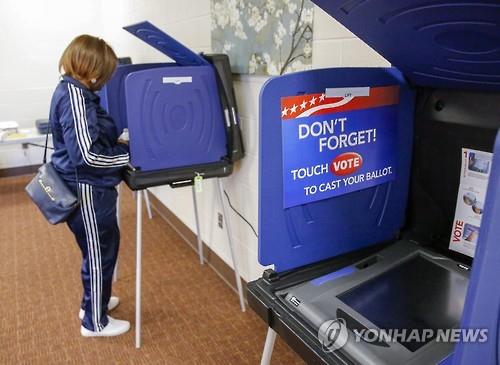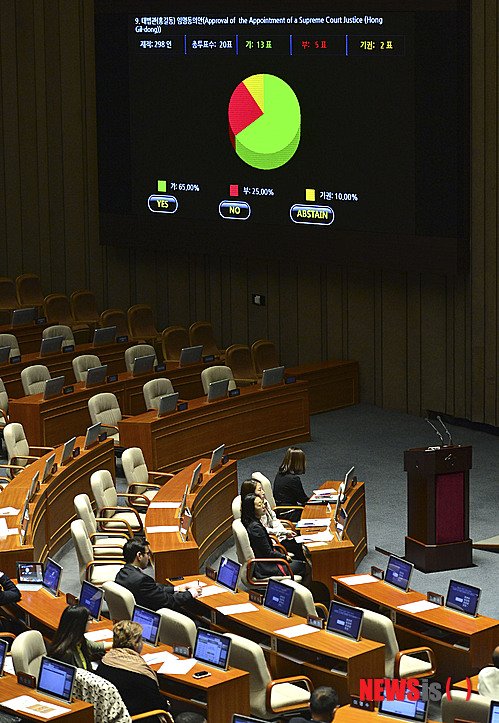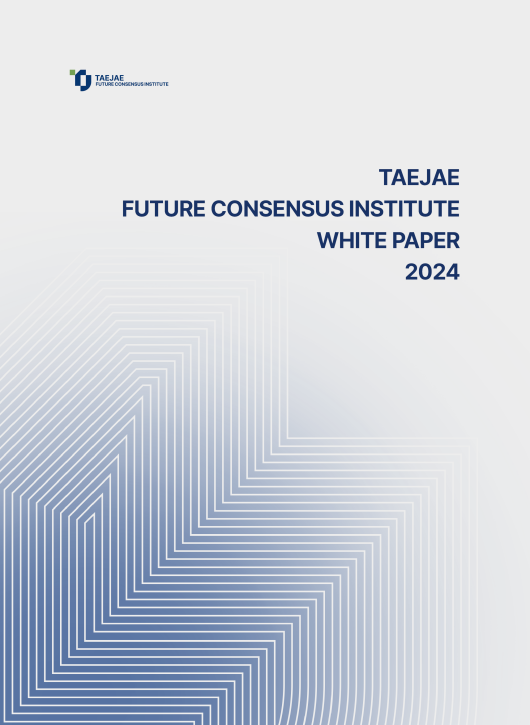Please join Yeosijae as we build a brighter future for Korea. Create your account to participate various events organized by Yeosijae.
- Insights
- |
- Digital Society
- Future Industries
Can we use e-voting in the next presidential election 2 years later?
E-voting would save time and cost remarkably
But building social confidence is the key

A huge wave of changes brought by COVID-19 will be sweeping across the society
The COVID-19 pandemic is bringing a huge wave of changes all over the world. Experts agree that the post-corona world will not return to where it used to be, or ‘normal’, but in fact it will be passing through a post-normal era and end up with a world of new standards and systems, or ‘new normal’.
Among them, one of the biggest changes will be the way we live and transact. It is highly likely that transactions will become more and more non-face-to-face and remote. That is to say, our life and work will increasingly go online. We are already witnessing in the increase of online shopping, work from home, online business dealings such as video conference and online collaborations. Education is no exception, of course. The telemedicine, of which implementation had been put on hold due to strong opposition, was also allowed temporarily. In future, the public demand for diversified medical services and health systems is likely to become stronger.
But there is one exception, Politics. Due to COVID-19, there was a debate in the political circle over postponing the upcoming April general election. But it has never been on the table the possibility of remote voting and counting (e-voting). Many Korean expatriates could not vote in this year’s general election because the National Election Commission(NEC) called off their voting citing difficulties to oversee the voting process in foreign countries because of the lockdown. But with an e-voting system, things would have been different.
Now is the time to take it into more serious consideration. It may not be easy to have everyone vote electronically in the upcoming presidential and local elections. But it would have to wait indefinitely unless we start the discussion on it immediately. We may run a pilot scheme of e-voting in a re-election or by-election that might take place before the nationwide elections.
USA, Japan, and other countries see more people vote and counting becomes much faster.
Electronic voting includes a wide range of voting and counting schemes such as kiosk voting with touch screens, Internet voting in which voters can cast their ballots at places other than designated voting stations, and mobile voting using smart phones. Voting is exerting sovereignty of the people and the act of solemn political choices, thus confidence is the key. Knowing that, each country is very careful about reforming its election systems. Some countries are in the process of gradually expanding e-voting, while some are scaling back as several problems came up in their trial implementation.
Brazil, shaken by political turmoil following election fraud, introduced electronic voting systems for the first time in part of the 1996 local elections. That came after the address by the nation’s Supreme Electoral Court chief in 1994. He said ‘all the distrust will end when the government replace paper ballots and ballot boxes with electronic machines.’ Since the 2000 general election, all the elections were fully electronic, including presidential and local elections. In the 1989 presidential election which took place before the introduction of e-voting, it took nine days to complete the counting. But in the 2006 presidential election, with the e-voting systems, the president-elect was announced just two hours after the counting. The number of invalid vote, which took up 33% on average in the 1990s, was also down to 7.6% in the 2002 elections, giving the election more faithful representation of the will of the people.
In India, election violence had been prevalent such as stealing and replacing ballot boxes, gangsters attacking voting places, and voters being blocked from accessing to ballot boxes. So the country partially introduced e-voting in 1982 and expanded it nationwide in 2004. Election cost went down considerably, and vote counting that used to take 30 to 40 hours took less than two or three hours. Invalidity votes dropped significantly as well.
In the 2000 US presidential election, the inaccuracies of punch card ballot systems in Floria that had led to recount has prompted political debate on adopting e-voting systems. After the recount they found that approximately 180,000 ballots were dropped, and could not name the winner of the Florida election for 36 days. It was finally settled by the ruling of the United States Supreme Court. The debacle over the recount brought criticism that the Supreme Court, not the people, decided the president of the nation and demand for better methods of casting ballots. The US passed legislation that would lay a legal ground for electronic voting and took steps with an aim to putting it in place starting the 2004 Presidential election. With the e-voting systems, invalid ballots have dropped from 3% to 1.6% and in the 2008 presidential election over 90% of registered voters cast their vote by means of e-voting.
Japan announced in 2001 the “E-Japan 2002 Program” and unveiled its plan to embrace e-voting to reduce invalid votes and simplify voting and counting in the local elections. Japanese voters in general elections still cast their ballots by writing the candidate’s or party’s name on a blank ballot paper, but starting 2002 electronic voting machines with touch screen technology were used in local elections.

(Source: Yonhap News)
UK, e-voting on halt due to counting process error
Some countries have failed in e-voting. England experimented touch-screen e-voting in the 2000 local government elections, and in 2001 some regions employed electronic voting by phones and the Internet. And a more extensive set of electoral pilots were conducted in the 2002 local government elections, including touch screens, remote voting, wireless devices, and kiosks installed in shopping centers. In the 2003 local government elections, the use of the Internet and phone voting were expanded and a new technology of interactive digital television was tested in voting. However, that came to a halt when the results of the London mayoral elections of 2008 had been called into question after technical problems took place in the process of counting ballot papers. Although the glitches did not change the overall result of the election, public doubt over electronic voting and counting grew rapidly.
The Netherlands was an early adapter of e-voting. As early as 1965, the Dutch enacted a new Electoral Law that paved the way for non-paper-ballot voting. A series of political debate began in 1974 regarding electronic voting, and an Electronic Voting Act was legislated in 1989. After years of preparation, they put e-voting into practice staring 1998. The effects of e-voting have come in various ways: reduced costs of voting, more accurate and faster counting, and fewer invalid votes. The Dutch embraced the new voting system and about 90% of the voters used electronic voting. In 1999, the Dutch government ran a promotion campaign called “Remote E-Voting Project”. In 2006, however, things have changed completely when a civic group opposing e-voting, Wij vertrouwen stemcomputers niet or ‘We Don’t Trust Voting Computers’ raised a loud alarm over the technical vulnerability of electronic voting on the media outlets. The group showed in a national television program how it could change the results of the elections by hacking the electronic voting machines. After the demonstration, e-voting was officially suspended, and paper ballots have returned in the Netherlands.
Haste makes waste
Case studies of the countries show that, those that employed kiosk electronic voting at voting stations, regardless of advanced or developing countries, have seen improved fairness and efficiency in the balloting process, reduced election costs and time, higher voter turnout, decreased counting errors, and fewer invalid votes. Its benefits were immediate and obvious. But at the same time, it was also found that the technical problems of electronic voting including hacking and other types of cyber breaches brought doubt and raised concerns among the public.
Both UK and the Netherlands have traditionally known to have high levels of social confidence and advanced information and communication technology. Yet why did they abandon e-voting system, unlike other countries that chose to fix the system whenever problems were detected? The UK could not afford to build a reliable system in its push to provide a wide range of voting channels as many as it could. In the process technical problems brought chaotic confusion, wreaking a havoc on the public trust in e-voting. Despite its preparation for quite a long time, the Netherlands decided to abandon e-voting for fear of possibility of hacking. The decision was made because they thought the benefits of e-voting was not as great as expected due to its relatively small population. As for larger countries like India, the United States, Brazil, and Japan, with their population over 100 million, efficient election management was important, but for the countries like the Netherlands having less than 20 million people, e-voting was not so attractive alternative over paper ballots. In the same context, many European countries maintain paper ballot systems in order to avoid any confusion that may be caused by changes in the voting systems.
The 2000 Democratic Party leadership election was the first case of e-voting in Korea.

2020 for the first time since its foundation. (Source: Yonhap News)
Korea has its own history of employing electronic voting. The discussions on how to improve voting and counting have begun in 1993, and the attempt to adopt electronic voting in 1998 and 2001 was unsuccessful. The legal groundwork was laid in 2000 with the amendment of the Public Official Election and Anti-Election Fraud Act. In 1998 and following years, button-type electronic voting machines and touch screen e-voting machines were developed successively and used in the 2002 presidential primaries of Democratic Party and the National Grand Party. In 2005, the government set up a plan to introduce e-voting in systematic and phased manners to Public Office elections, but it didn’t work out.
According to the 2005 roadmap by the NEC, it planned to use touch-screen e-voting machines to all public elections in 2012 after step-by-step preparations and pilot projects. They planned to develop e-voting machines and to build an Internet voting system starting from May 2005, and go through a set of pilots in some local elections in 2006 and re-election in 2007, and allow voters to select freely any voting location in the country in the 2008 general election. It was a plan to expand e-voting system gradually. However, e-voting system has not been introduced until 14 years after the 2006 nationwide local elections, in which touch screen e-voting systems built on the integrated electoral list was put on a trial run.
K-Voting system developed in 2006 is widely used in leadership elections by universities and unions
However, e-voting is gradually taking root throughout our society. The first case in Korea was the election of the top committee member at the 2000 Millennium Democratic Party Convention where the touch screen machines were used. In 2002 Democratic Party presidential candidate election, touch screen machines and Internet voting were used. Notably, the NEC’s electronic voting system (K-Voting) that was developed in 2006 is being widely used in civil and public elections by both political parties and unions such as the Agricultural Cooperative, Fisheries Cooperative, and Livestock Cooperative and by universities and student councils etc. In particular, as more than 50% of the voters are over 60 in union leader elections, the system has been improved so that the elderly voters could use touch screen machines more easily. Since 2013, it has been used in elections of multi-unit residence representatives, and by the end of November 2018, and it is estimated that a total of 5,640,000 used K-Voting in 4,156 occasions. Voter turnout in such elections, that had traditionally been very low and criticized of insufficient representativeness of the vote, rose to an average of 56% and up to 80%, which resulted in getting rid of disputes over voting results.
80% of general shareholders’ meetings of listed companies are voting electronically.
E-voting is on the rise not only in elections, but also in general shareholders’ meetings of listed companies. In 2019, 650 companies, or 32.3% of the 2,000 listed companies introduced e-voting at their general shareholders’ meeting. And in 2020, the number tripled to 1,660 companies compared to the previous year. As much as 80% of listed companies are using it. The National Assembly and local councils are already holding e-voting and counting on all policy matters except human resources affairs.
With mobile voting, costs of voting and counting would be down to one tenth.
The NEC’s electronic voting system, or K-Voting is now being recognized for its convenience, cost saving effects, and security, with its remote voting systems including Internet voting and mobile voting as well as touch screen machines in polling sites. As of 2005, the NEC estimated that a touch screen voting system would reduce the cost of voting and counting from an average of KW 40 billion per voting, to KW 16 billion. It means if it goes well, more than 50% of the cost would be saved. Mobile voting, in particular, could reduce the election cost to one tenth because the cost per capita went down to 500 to 700 won from 5000 to 10,000 won.
90% of Koreans support e-voting
How are Koreans thinking about e-voting? Since the discussion on e-voting has gone cold since 2013, it is difficult to know how the public think. But given the results of the earlier surveys and wide use of e-voting in the private sector and increasingly connected lifestyle of people, Koreans are definitely in favor of e-voting.
In 2012 the NEC surveyed party those who participated in e-voting for electing party candidates, about 90% of them favored e-voting for public offices. According to the poll by Seoul National University’s Korea Political Research Institute in July 2013, 86.1% of respondents said they prefer touch screen machines to be used in public office elections rather than paper ballots. When asked to choose between a paper ballot and a touch screen voting machine, 81.8% said they would choose touch screen voting machines.
E-voting can enhance voter turnout as well. Of those who didn’t vote in the 2018 nationwide local elections, as many as 27.9% said they wished to but could not afford because of their personal chores and work. So with e-voting it was estimated that, based on the 60.2% of voter turnout at that time, it could rise by 11.1%.
Growth in Youtube users bridges the digital divide between the young and the old.
Forward-looking approach is needed when it comes to remote voting as well kiosk voting. In the past elections, the voter turnout of youth in their 20s and 30s was around 50%, lower than that of the elderly in their 70s and 80s. But in the 2017 presidential election, the turnout was around 70% in all age groups from 20s to 50s. As the turnout of the younger casting their ballots has already risen, it is not likely that the IT savvy younger generation only will show outstanding surge in turnouts by the adoption of e-voting and remote voting. The growth in the number of elderly Youtube users signifies the narrowing digital divide among age groups. Additionally, most countries employ electronic voting in ways that allow voters to choose between paper ballots and e-voting, so the problems due to the digital divide are less likely to occur.
These days e-voting is evolving from touch screen-installed kiosks at voting places to the Internet voting, or remote voting. Estonia became the first country in the world to hold the election for public offices in October 2005 via the Internet. It was a partial pilot that only 1% of all Estonian voters took part in, but the number of those voting electronically has been on a steady increase. Switzerland has been holding Internet voting since 2014, but only for overseas residents. Lithuania is expected to introduce Internet voting in 2020. In some countries, however, Internet voting was suspended after being piloted. Finland piloted Internet voting in 2008 and then stopped in 2017 in the conclusion that its risk outweighed convenience. France, also, stopped using Internet voting in 2017 on the ground of concerns over its cyber security and insufficient infrastructure.

(Source: Newsis)
Korea is confirmed as one of the world’s stronggest IT countries amid the COVID-19 crisis.
However, Korea has proven itself in the COVID-19 crisis that it has social infrastructure capable of holding e-voting and remote voting. As of 2018, its Internet penetration rate was 99.5%, and 91.5% of Koreans are connected on line, and 89.6% are smartphone users. Certainly, the Korean IT industry is one of the best in the world. However, it is hard to understand such an IT powerhouse is not implementing e-voting and even there is no debate over introducing internet and mobile voting. Remote voting is also expected to give a boost to participatory democracy such as participatory budgeting and recall referendum.
So it is time for politicians to stop putting their political interests aside in regard with e-voting and make a right decision to contribute to the nation’s political stability, thus helping people exercise their right to vote with more ease and accessibility and have more voice in policymaking.
First step is to introduce kiosk voting
I am not in a position to offer an accurate assessment over whether and which technical errors would arise in the process of e-voting and remote voting, and experts in the field will do and make judgments. But given the outcome of pilots that have been held so far, I am confident that nothing could go wrong. the NEC’s e-voting system was tested out in a wide range of elections by the political party primaries, public institutions, to university faculties. But so far there has been no single complaint or objection to the election results. As the NEC’s touch screen machines are not connected to the Internet, so there is no chance at all of a cyber infiltration or manipulation of the results from outside. If mobile or online voting is thought to be a bit premature, we have kiosk voting ready and available at any time.
Most of all, the NEC’s e-voting system or K-voting is largely viewed to satisfy the four basic principles of democratic elections (to be universal, equal, direct, and secret vote), and the guidelines for technical security and reliability of online voting. Experts say K-voting is accurate (all valid votes are accurately counted in the results), verifiable (it offers a means to verify the voting results to prevent fixing the results), complete (it screens out illegitimate voters and doesn’t count in illegitimate votes), unitary (those with no voting right can’t cast a ballot), legitimate (one voter can cast only one vote), confidential (it keeps confidentiality of voters and who they voted for), and fair (vote counting during the election does not affect the results). With this reliable and advanced technology, Korea’s e-voting and e-government systems have been exported to a number of countries and companies are exporting e-voting terminals and solutions. If e-voting is introduced to Public Office elections, exports of e-voting items are likely to surge thanks to the confidence on the NEC of Korea.
The Court ruled against complaints raised on vote-rigging.
Korea’s election management system is already world-class. The electoral register drawn up for e-voting in 2006 laid the groundwork for the early voting system, which was first introduced in the 2013 by-election and is now firmly in place. Korea’s early voting system connects the entire country with communications network based on electoral register and allows voters to cast their ballots wherever there is an absentee voting site where they can have a ballot paper of their electoral district. It was the first of its kind in the world. Of course, at that time some people raised concerns over the fairness of early voting, and the 18th presidential election was tainted with allegations of the National Intelligence Service’ meddling in the election process and possible fabricating vote counts. Eventually, the court concluded that there were no illegal act in the voting and counting. However, the incidence showed that political disputes and distrust could lead to criticism against the technology and undermine public confidence in it.
Case studies on other countries show that, e-voting and remote voting have proven to be effective in voting management, higher voter turnout, and cost reduction. But at the same time it was also found that when technical errors arose, some countries would abandon the e-voting systems altogether rather than fix the problems and embrace the technology. The lessons we can learn from them is that, in order to build public confidence in e-voting and put it in place, gradual and systematic approach is necessary while drawing public support and consensus at the same time.
From kiosk voting to remote voting
We believe e-voting to have sufficient support from Korean public. Of course, given the complaints raised against the way votes were counted when early voting was introduced, a gradual implementation may be a better option. Additionally, current technical infrastructure of e-voting (including remote voting), and the Internet and mobile use of Koreans are a solid technological basis for remote voting. However, transparency of elections can be achieved only when voters trust the voting process from meticulous preparations, proceedings and vote counting. So the government must build public trust on e-voting first by means of phased implementation.
The first step is to allow voters to choose between kiosk voting with touch-screen machines and a paper ballot, which would help them have confidence in counting system. The second step is to, desirably, expand it to remote voting based on the public trust built. The government can hold pilots with Korean expatriates living overseas casting their vote online and have it improved. If the public feel more comfortable with remote voting under the COVID-19 crisis and political agreement is reached, immediate implementation of kiosk e-voting or remote voting combined with paper ballots may be possible.
E-voting must be on the agenda in the 21st National Assembly.
Blockchain technology may need to be integrated.
According to the Korean election calendar, the presidential election is slated to be held in March 2022, and local elections in May of the same year. Holding both the elections at the same day is also a possibility. If constitutional amendment does not happen, the 22nd general election must be held in four years. Plus several re-elections in between. As soon as the general election this year is over, the government must create a special committee under the National Assembly and start discussing the ways to implement e-voting in phases. Geographically, start with overseas and then expand it to the country. Technologically, start from kiosk voting with touch screens and then move to the Internet and mobile voting. That would, in return, bring a revolutionary advancement to voting and counting ballots and further strengthen IT infrastructure of the country. The concerns over cyber security and technical reliability must go through a thorough examination. Integration of blockchain technology into the e-voting systems, if necessary, is one of the possibilities.
[Reference]
- A Study on the Efficiency of the Election System - Focused on Introduction of the Electronic Voting System, KIPA (Korea Institute of Public Administration), 2013
- Analysis on National Election Commission’s Management Practices of Public Official Election Institutions and Improvement Plans, KIPA (Korea Institute of Public Administration), 2014
- Research on Polices to Improve Voting and Counting Processes, SNU-ACPR (Seoul National University-Asian Consortium for Political Research), 2013
- Issues and Challenges of the 2020 Shareholders’ General Meetings of Listed Companies, NARS (National Assembly Research Service), 2020
- Analytic Report on the 3rd Survey on Voters of the 7th Nationwide Local Elections, NEC (National Election Commission)
- Electronic voting by country, Wikipedia
< Copyright holder © TAEJAE FUTURE CONSENSUS INSTITUTE, Not available for redistribution >












